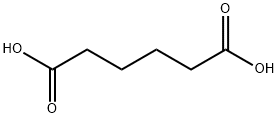Adipic acid
- CAS No.
- 124-04-9
- Chemical Name:
- Adipic acid
- Synonyms
- adipic;adipate;Hexane diacid;Acifloctin;Hexanedioate;adipinic acid;AA, Adipic acid;Asapic;NA-9077;Adi-pure
- CBNumber:
- CB0718158
- Molecular Formula:
- C6H10O4
- Molecular Weight:
- 146.14
- MDL Number:
- MFCD00004420
- MOL File:
- 124-04-9.mol
- MSDS File:
- SDS
| Melting point | 151-154 °C(lit.) |
|---|---|
| Boiling point | 265 °C100 mm Hg(lit.) |
| Density | 1,36 g/cm3 |
| vapor density | 5 (vs air) |
| vapor pressure | 1 mm Hg ( 159.5 °C) |
| refractive index | 1.4880 |
| FEMA | 2011 | ADIPIC ACID |
| Flash point | 385 °F |
| storage temp. | Store below +30°C. |
| solubility | methanol: 0.1 g/mL, clear, colorless |
| form | Solid |
| pka | 4.43(at 25℃) |
| color | White |
| PH | 3.74(1 mM solution);3.22(10 mM solution);2.71(100 mM solution); |
| Odor | wh. monoclinic prisms, pract. odorless |
| Water Solubility | 1.44 g/100 mL (15 ºC) |
| JECFA Number | 623 |
| Merck | 14,162 |
| BRN | 1209788 |
| Exposure limits | ACGIH: TWA 5 mg/m3 |
| Dielectric constant | 1.8(Ambient) |
| Stability | Stable. Substances to be avoided include ammonia, strong oxidizing agents. |
| InChIKey | WNLRTRBMVRJNCN-UHFFFAOYSA-N |
| LogP | 0.09 at 25℃ |
| FDA 21 CFR | 184.1009; 582.1009; 175.300; 175.320; 177.1680 |
| Substances Added to Food (formerly EAFUS) | ADIPIC ACID |
| SCOGS (Select Committee on GRAS Substances) | Adipic acid |
| CAS DataBase Reference | 124-04-9(CAS DataBase Reference) |
| EWG's Food Scores | 1 |
| FDA UNII | 76A0JE0FKJ |
| NIST Chemistry Reference | Hexanedioic acid(124-04-9) |
| EPA Substance Registry System | Adipic acid (124-04-9) |
SAFETY
Risk and Safety Statements
| Symbol(GHS) |  GHS05 |
|||||||||
|---|---|---|---|---|---|---|---|---|---|---|
| Signal word | Danger | |||||||||
| Hazard statements | H318 | |||||||||
| Precautionary statements | P280-P305+P351+P338 | |||||||||
| Hazard Codes | Xi | |||||||||
| Risk Statements | 36-41 | |||||||||
| Safety Statements | 26-39-24/25 | |||||||||
| WGK Germany | 1 | |||||||||
| RTECS | AU8400000 | |||||||||
| Autoignition Temperature | 788 °F | |||||||||
| TSCA | Yes | |||||||||
| HS Code | 29171210 | |||||||||
| Toxicity | LD50 orally in Rabbit: 5700 mg/kg LD50 dermal Rabbit > 7940 mg/kg | |||||||||
| NFPA 704 |
|
Adipic acid price More Price(49)
| Manufacturer | Product number | Product description | CAS number | Packaging | Price | Updated | Buy |
|---|---|---|---|---|---|---|---|
| Sigma-Aldrich | PHR2341 | Adipic Acid Pharmaceutical Secondary Standard; Certified Reference Material | 124-04-9 | 200MG | $200 | 2024-03-01 | Buy |
| Sigma-Aldrich | 8.18650 | Adipic acid for synthesis | 124-04-9 | 100G | $43.2 | 2024-03-01 | Buy |
| Sigma-Aldrich | 8.18650 | Adipic acid for synthesis | 124-04-9 | 1KG | $55.4 | 2024-03-01 | Buy |
| Sigma-Aldrich | 1.00090 | Adipic acid EMPROVE? ESSENTIAL, Ph. Eur., NF | 124-04-9 | 1KG | $184 | 2024-03-01 | Buy |
| Sigma-Aldrich | 1.00090 | Adipic acid EMPROVE? ESSENTIAL Ph Eur,NF,FCC,E 355 | 124-04-9 | 25kg | $439 | 2024-03-01 | Buy |
Adipic acid Chemical Properties,Uses,Production
Description
Adipic acid is a crystalline powder with practically no odor. It has the lowest acidity of any of the acids commonly used in foods and has excellent buffering capacity in the range of pH 2.5 to 3.0. Like succinic and fumaric acid, adipic acid is practically nonhygroscopic. Its addition to foods imparts a smooth, tart taste. In grape-flavored products, it adds a lingering supplementary flavor and gives an excellent set to food powders containing gelatin. As a result, adipic acid has found a wide number of uses as an accidulant in dry powdered food mixtures, especially in those products having delicate flavors and where addition of tang to the flavor is undesirable.
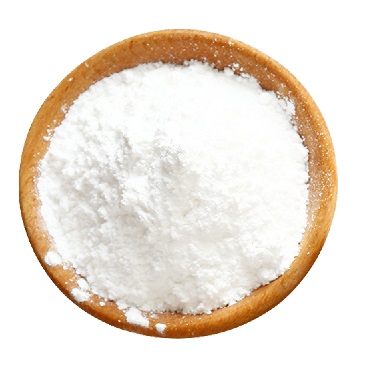
Its aqueous solutions have the lowest acidity of any of the common food acids. For concentrations from 0.5 to 2.4 g/100 mL, the pH of its solution varies less than half a unit. Hence, it can be used as a buffering agent to maintain acidities within the range of 2.5 to 3.0. This is highly desirable in certain foods, yet the pH is low enough to inhibit the browning of most fruits and other foodstuffs.
Chemical Properties
Adipic acid is the organic compound with the formula (CH2)4(COOH)2. From the industrial perspective, it is the most important dicarboxylic acid: About 2.5 billion kilograms of this white crystalline powder are produced annually, mainly as a precursor for the production of nylon. Adipic acid otherwise rarely occurs in nature.
Physical properties
Adipic acid is a straight-chain dicarboxylic acid that exists as a white crystalline compound at standard temperature and pressure. Adipic acid is one of the most important industrial chemicals and typically ranks in the top 10 in terms of volume used annually by the chemical industry.
Occurrence
Reported found as a minor constituent in butter, and has been found in other fats as a product of oxidative rancidity. It also occurs in beet juice, pork fat, guava fruit (Psidium guajava L.), papaya (Carica papaya L.) and raspberry (Rubus idaeus L.).
Uses
Adipic acid’s main use is in the production of 6,6 nylon. It is also used in resins, plasticizers, lubricants, polyurethanes, and food additives.
Uses
Adipic Acid is an acidulant and flavoring agent. it is characterized as stable, nonhygroscopic, and slightly soluble, with a water solubility of 1.9 g/100 ml at 20°c. it has a ph of 2.86 at 0.6% usage level at 25°c. it is used in powdered drinks, beverages, gelatin desserts, loz- enges, and canned vegetables. it is also used as a leavening acidulant in baking powder. it can be used as a buffering agent to maintain acidities within a range of ph 2.5–3.0. it is occasionally used in edi- ble oils to prevent rancidity.
Uses
Adipic Acid is primarily used in the synthesis of nylon. It has been used as a reagent in the solid-state polymerization of nylon analogs.
Preparation
Adipic acid is produced from a mixture of cyclohexanol and cyclohexanone called "KA oil", the abbreviation of "ketone-alcohol oil." The KA oil is oxidized with nitric acid to give adipic acid, via a multistep pathway. Early in the reaction the cyclohexanol is converted to the ketone, releasing nitrous acid:
HOC6H11 + HNO3 → OC6H10 + HNO2 + H2O
Among its many reactions, the cyclohexanone is nitrosated, setting the stage for the scission of the C- C bond:
HNO2 + HNO3 → NO+NO3- + H2O
OC6H10 + NO+→ OC6H9-2 - NO + H+
Side products of the method include glutaric and succinic acids.
Related processes start from cyclohexanol, which is obtained from the hydrogenation of phenol.
Definition
ChEBI: An alpha,omega-dicarboxylic acid that is the 1,4-dicarboxy derivative of butane.
Production Methods
Adipic acid can be manufactured using several methods, but the traditional and main route of preparation is by the two-step oxidation of cyclohexane (C6H12). In the first step, cyclohexane is oxidized to cyclohexanone and cyclohexanol with oxygen or air. This occurs at a temperature of approximately 150°C in the presence of cobalt or manganese catalysts. The second oxidation is done with nitric acid and air using copper or vanadium catalysts. In this step, the ring structure is opened and adipic acid and nitrous oxide are formed. Other feedstocks such as benzene and phenol may be use to synthesize adipic acid. Adipic acid production used to be a large emitter of nitrous oxide, a greenhouse gas, but these have been controlled in recent years using pollution abatement technology.
Production Methods
Adipic acid is prepared by nitric acid oxidation of cyclohexanol or cyclohexanone or a mixture of the two compounds. Recently, oxidation of cyclohexene with 30% aqueous hydrogen peroxide under organic solvent- and halide-free conditions has been proposed as an environmentally friendly alternative for obtaining colorless crystalline adipic acid.
Reactions
Adipic acid is a dibasic acid (can be deprotonated twice). Its pKa's are 4.41 and 5.41.
With the carboxylate groups separated by four methylene groups, adipic acid is suited for intramolecular condensation reactions. Upon treatment with barium hydroxide at elevated temperatures, it undergoes ketonization to give cyclopentanone.
Biotechnological Production
Adipic acid is industrially produced by chemical synthesis. However, there
are new efforts to develop an adipic acid production process using biorenewable
sources. A direct biosynthesis route has not yet been reported. The possible
precursors Z,Z-muconic acid and glucaric acid can be produced biotechnologically
by fermentation. Z,Z-muconic acid can be made from benzoate with concentrations
up to 130 mM with a yield of close to 100 % (mol/mol) by Pseudomonas putida
KT2440-JD1 grown on glucose. Alternatively, it can be produced by engineered
E. coli directly from glucose at up to 260 mM with a yield of 0.2 mol Z,Zmuconic
acid per mole glucose .
The production of the second possible precursor, glucaric acid, by engineered
E. coli growing on glucose has been reported. However, the product titers were
low (e.g. 4.8 and 12 mM. To overcome the problem of low product
concentrations, an alternative synthetic pathway has been suggested but not yet
demonstrated .
In a hydrogenation process, Z,Z-muconic acid and glucaric acid could be
converted chemically into adipic acid. Therefore, bimetallic nanoparticles or
platinum on activated carbon as catalysts have been studied . In particular,
nanoparticles of Ru10Pt2 anchored within pores of mesoporous silica showed high
selectivity and conversion rates, greater than 0.90 mol adipic acid per mole Z,Zmuconicacid. With platinum on activated carbon, conversion rates of
0.97 mol.mol-1 of Z,Z-muconic acid into adipic acid have been shown.
Another possibility would be the production of adipic acid from glucose via the
a–aminoadipate pathway ]. Finally, the production of adipic acid from longchain
carbon substrates has been suggested. The conversion of fatty acids into
dicarboxylic acids by engineered yeast strains has been reported.
General Description
Adipic acid is a white crystalline solid. Adipic acid is insoluble in water. The primary hazard is the threat to the environment. Immediate steps should be taken to limit its spread to the environment. Adipic acid is used to make plastics and foams and for other uses.
Air & Water Reactions
Dust may form explosive mixture with air [USCG, 1999]. Insoluble in water.
Reactivity Profile
Adipic acid is a carboxylic acid. Carboxylic acids donate hydrogen ions if a base is present to accept them. They react in this way with all bases, both organic (for example, the amines) and inorganic. Their reactions with bases, called "neutralizations", are accompanied by the evolution of substantial amounts of heat. Neutralization between an acid and a base produces water plus a salt. Carboxylic acids with six or fewer carbon atoms are freely or moderately soluble in water; those with more than six carbons are slightly soluble in water. Soluble carboxylic acid dissociate to an extent in water to yield hydrogen ions. The pH of solutions of carboxylic acids is therefore less than 7.0. Many insoluble carboxylic acids react rapidly with aqueous solutions containing a chemical base and dissolve as the neutralization generates a soluble salt. Carboxylic acids in aqueous solution and liquid or molten carboxylic acids can react with active metals to form gaseous hydrogen and a metal salt. Such reactions occur in principle for solid carboxylic acids as well, but are slow if the solid acid remains dry. Even "insoluble" carboxylic acids may absorb enough water from the air and dissolve sufficiently in Adipic acid to corrode or dissolve iron, steel, and aluminum parts and containers. Carboxylic acids, like other acids, react with cyanide salts to generate gaseous hydrogen cyanide. The reaction is slower for dry, solid carboxylic acids. Insoluble carboxylic acids react with solutions of cyanides to cause the release of gaseous hydrogen cyanide. Flammable and/or toxic gases and heat are generated by the reaction of carboxylic acids with diazo compounds, dithiocarbamates, isocyanates, mercaptans, nitrides, and sulfides. Carboxylic acids, especially in aqueous solution, also react with sulfites, nitrites, thiosulfates (to give H2S and SO3), dithionites (SO2), to generate flammable and/or toxic gases and heat. Their reaction with carbonates and bicarbonates generates a harmless gas (carbon dioxide) but still heat. Like other organic compounds, carboxylic acids can be oxidized by strong oxidizing agents and reduced by strong reducing agents. These reactions generate heat. A wide variety of products is possible. Like other acids, carboxylic acids may initiate polymerization reactions; like other acids, they often catalyze (increase the rate of) chemical reactions. Behavior in Fire: Melts and may decompose to give volatile acidic vapors of valeric acid and other substances.
Health Hazard
Exposures to adipic acid cause pain, redness of the skin and eyes, tearing or lacrimation. Adipic acid has been reported as a non-toxic chemical. Excessive concentrations of adipic acid dust are known to cause moderate eye irritation, irritation to the skin, and dermatitis.It may be harmful if swallowed or inhaled. It causes respiratory tract irritation with symptoms of coughing, sneezing, and blood-tinged mucous.
Flammability and Explosibility
Non flammable
Pharmaceutical Applications
Adipic acid is used as an acidifying and buffering agent in
intramuscular, intravenous and vaginal formulations. It is also
used in food products as a leavening, pH-controlling, or flavoring
agent.
Adipic acid has been incorporated into controlled-release
formulation matrix tablets to obtain pH-independent release for
both weakly basicand weakly acidic drugs.It has also been
incorporated into the polymeric coating of hydrophilic monolithic
systems to modulate the intragel pH, resulting in zero-order release
of a hydrophilic drug.The disintegration at intestinal pH of the
enteric polymer shellac has been reported to improve when adipic
acid was used as a pore-forming agent without affecting release in
the acidic media.Other controlled-release formulations have
included adipic acid with the intention of obtaining a late-burst
release profile.
Safety Profile
Poison by intraperitoneal route. Moderately toxic by other routes. A severe eye irritant. Combustible when exposed to heat or flame; can react with oxidzing materials. When heated to decomposition it emits acrid smoke and fumes.
Safety
Adipic acid is used in pharmaceutical formulations and food
products. The pure form of adipic acid is toxic by the IP route, and
moderately toxic by other routes. It is a severe eye irritant, and may
cause occupational asthma.
LD50 (mouse, IP): 0.28 g/kg
LD50 (mouse, IV): 0.68 g/kg
LD50 (mouse, oral): 1.9 g/kg
LD50 (rat, IP): 0.28 g/kg
LD50 (rat, oral): >11 g/kg
Synthesis
By oxidation of cyclohexanol with concentrated nitric acid; by catalytic oxidation of cyclohexanone with air.
Potential Exposure
Workers in manufacture of nylon, plasticizers, urethanes, adhesives, and food additives
storage
Adipic acid is normally stable but decomposes above boiling point. It should be stored in a tightly closed container in a cool, dry place, and should be kept away from heat, sparks, and open flame.
Shipping
UN3077 Environmentally hazardous substances, solid, n.o.s., Hazard class: 9; Labels: 9-Miscellaneous hazardous material, Technical Name Required
Purification Methods
For use as a volumetric standard, adipic acid is crystallised once from hot water with the addition of a little animal charcoal, dried at 120o for 2hours, then recrystallised from acetone and again dried at 120o for 2hours. Other purification procedures include crystallisation from ethyl acetate and from acetone/petroleum ether, fusion followed by filtration and crystallisation from the melt, and preliminary distillation under vacuum. [Beilstein 2 IV 1956.]
Incompatibilities
Adipic acid is incompatible with strong oxidizing agents as well as strong bases and reducing agents. Contact with alcohols, glycols, aldehydes, epoxides, or other polymerizing compounds can result in violent reactions.
Waste Disposal
Dissolve or mix the material with a combustible solvent and burn in a chemical incinerator equipped with an afterburner and scrubber. All federal, state, and local environmental regulations must be observed
Precautions
Occupational workers should avoid contact of the adipic acid with the eyes, avoid breathing dust, and keep the container closed. Workers should use adipic acid only with adequate ventilation. Workers should wash thoroughly after handling adipic acid and keep away from heat, sparks, and flame. Also, workers should use rubber gloves and laboratory coats, aprons, or coveralls, and avoid creating a dust cloud when handling, transferring, and cleaning up.
Regulatory Status
GRAS listed. Included in the FDA Inactive Ingredients Database (IM, IV, and vaginal preparations). Accepted for use as a food additive in Europe. Included in an oral pastille formulation available in the UK. Included in the Canadian List of Acceptable Non-medicinal Ingredients.
Adipic acid Preparation Products And Raw materials
Raw materials
1of3
Preparation Products
1of6
| Supplier | Tel | Country | ProdList | Advantage | |
|---|---|---|---|---|---|
| Dayang Chem (Hangzhou) Co.,Ltd. | 571-88938639 +8617705817739 | info@dycnchem.com | CHINA | 52867 | 58 |
| ShanDong Look Chemical Co.,Ltd. | +8617653113219 | sales01@sdlookchemical.com | China | 2739 | 58 |
| Shandong Huisheng Import & Export Co., Ltd. | +86-13176845580 +86-13176845580 | da@zhongda-biotech.com | China | 248 | 58 |
| Henan Fengda Chemical Co., Ltd | +86-371-86557731 +86-13613820652 | info@fdachem.com | China | 7378 | 58 |
| airuikechemical co., ltd. | +undefined86-15315557071 | sales02@airuikechemical.com | China | 994 | 58 |
| hebei hongtan Biotechnology Co., Ltd | +86-86-1913198-3935 +8617331935328 | sales03@chemcn.cn | China | 951 | 58 |
| Shaanxi TNJONE Pharmaceutical Co., Ltd | +86-13474506593 +86-13474506593 | sarah@tnjone.com | China | 775 | 58 |
| Capot Chemical Co.,Ltd. | 571-85586718 +8613336195806 | sales@capotchem.com | China | 29797 | 60 |
| Henan Tianfu Chemical Co.,Ltd. | +86-0371-55170693 +86-19937530512 | info@tianfuchem.com | China | 21695 | 55 |
| Hangzhou FandaChem Co.,Ltd. | 008657128800458; +8615858145714 | fandachem@gmail.com | China | 9352 | 55 |
Related articles
- Adipic acid: Uses and Synthesis
- This passage describes that Adipic acid is used in medicine and foods, and also introduces the laboratory and industrial synth....
- Nov 16,2022
View Lastest Price from Adipic acid manufacturers
| Image | Update time | Product | Price | Min. Order | Purity | Supply Ability | Manufacturer | |
|---|---|---|---|---|---|---|---|---|
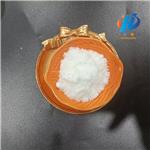 |
2024-04-18 | Adipic acid
124-04-9
|
US $50.00 / kg | 1kg | 99.10% | 5000kg | Ouhuang Engineering Materials (Hubei) Co., Ltd | |
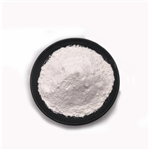 |
2024-04-18 | Adipic acid
124-04-9
|
US $1100.00 / ton | 5ton | 99% | 1000tons | Hebei Dangtong Import and export Co LTD | |
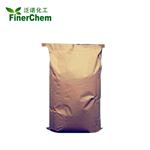 |
2024-04-17 | Adipic acid
124-04-9
|
US $2.00 / KG | 1KG | ≥99.5% | 1000mt/year | Jinan Finer Chemical Co., Ltd |
-

- Adipic acid
124-04-9
- US $50.00 / kg
- 99.10%
- Ouhuang Engineering Materials (Hubei) Co., Ltd
-

- Adipic acid
124-04-9
- US $1100.00 / ton
- 99%
- Hebei Dangtong Import and export Co LTD
-

- Adipic acid
124-04-9
- US $2.00 / KG
- ≥99.5%
- Jinan Finer Chemical Co., Ltd





